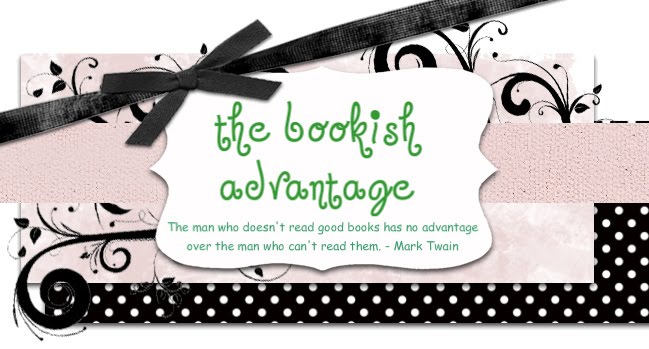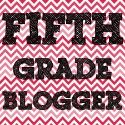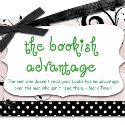21st Century Literacies
Monday, May 31, 2010
I completely agree that teachers need to modify their teaching to prepare students for a world with an increasing about of technology. However, this article points out that while technology is important, basic written and spoken communication skills, work ethic, critical thinking, and the ability to collaborate with others are also skills that students will need as they enter the workforce. Because I teach at the elementary level, I am less concerned with the workforce connection, and more concerned with the fact that my students will experience the rest of their school careers in a way that is different than their parents, and possibly their siblings.
I am immediately drawn to the fact that this article supports incorporating technology into the classroom, because I believe that students need to be taught how to appropriately and effectively use available technology. I would love to use new kinds of technology in my classroom. I am especially drawn to the idea of e-portfolios – although, I don’t know much about how to organize/establish/create them for my students. I think that e-portfolios could be very interesting for students to use throughout their school careers because the portfolio would truly show student growth, while also encouraging the use of technology and reflection. I also like the idea of having a class website that could be used for a variety of purposes.
I think one of the most important pieces of integrating technology into the classroom is in teaching students how to use different technology effectively. For example, students need to realize that just because something is on the internet, it isn’t necessarily true. The article even recommends giving students strategies for evaluating the quality of internet information. I think this is especially true at the elementary level. Equally important is teaching students how to use digital information without plagiarizing! My 5th graders are expert plagiarizers, so this hit home with me right away! While “copy” and “paste” are great tools, we need to teach students how to avoid using them to “write” papers. In addition to that, we need to show students how to cite their sources appropriately, since even paraphrasing the source can be considered plagiarism.
One key piece to making this work is professional development opportunities for teachers. Even technology-inclined teachers sometimes struggle to incorporate technology into the classroom, so it is important for corporations to provide help at all levels of technology knowledge.
Switching Gears
Reflection: “Switching Gears: Helping Students move Successfully from Reading Literature to Reading in the Content Areas” by Steve Peha
“Put simply: content area reading is more difficult than reading literature”
I could not agree more with the statement that reading content area material (nonfiction) is more difficult than reading literature (fiction)! In fact, I’ve been explaining that to parents since I started teaching. I believe that nonfiction reading is more difficult because you can’t always “get the jist” of the reading, but with fiction, that is usually possible. As a second grade teacher, I literally explained this to at least one set of parents a quarter (probably more).
I have always known that reading nonfiction meant using a different skill set, and I have tried to teach that to my students, but this article pointed out a few things that I think will help me to ensure that I’m encouraging student learning even more effectively.
Peha points out that we need to look at eight broad areas, so I’ll be commenting on each:
1. Differences – Because there are differences in fiction and nonfiction, we need to teach students that there are different approaches to reading the two types of text.
2. Balance – Students need to be presented with both fiction and nonfiction texts starting at a young age, and they need to be taught the skills needed to be successful when reading both texts. By beginning at a younger age, students will become more comfortable with both sets of skills (those for fiction and those for nonfiction, and they should be more likely to experience success later, when content reading becomes more prevalent.
3. Process – “…kids need to know not only what they are reading, but how they are reading as well.” As teachers, we need to point out that reading is a process and that there are steps to making sure the process runs as effectively as possible.
4. Strategy – Students need to be taught strategies to use with all types of text, so that when the reading becomes difficult, they have tools to continue on instead of stopping. Teachers also need to point out that there are different strategies for different types of text --- even though we take this knowledge for granted, the kids may not realize that fact.
5. Modeling – “…all teachers can model their own reading processes and strategies in front of their students.” However, some teachers may need some professional development to learn how to do this effectively. Again, many of the things that we do automatically, don’t even occur to students because those skills haven’t been taught.
6. Retention – Reading information and remembering the information are not the same thing. “In addition to showing kids how to understand nonfiction information, we have to show them how to remember it as well.” This means giving students another set of tools!
7. Applications – People are more likely to remember information that is meaningful to them, so teachers need to show students how to make things meaningful. (Worksheets and answering questions are not the most effective tool for this – and actually tend to be detrimental because they create bad habits and attitudes.)
8. Value – Students need to understand that nonfiction reading is an essential skill, not only to be successful in school, but to be successful in the real world. Teachers need to present students with nonfiction texts that have real world value so that students can begin to see that nonfiction has a purpose beyond school assignments.
“…all teachers can help their students read more effectively by making small
changes to their regular teaching…”
Going with the Flow
As I read through this chapter, I was especially impressed by the idea of the inquiry unit, because it seems to be an engaging way to get students involved in their own learning. An inquiry unit focuses around a big, central question, but can then tie in a variety of learning experiences across the curriculum to ensure that students fully understand the content. The process of designing an inquiry unit has three steps: (1) Start with a big, essential question, (2) Identify real-world tasks that involves responding to the question in a “real” way, and (3) Plan backwards from by finding/planning activities that will address the big question and enhance students’ understanding. (p. 56)
The Big Question: Students “need to understand how knowledge has been created to solve past problems so they will know the story behind the facts and the uses and justifications behind the methods and concepts that the discipline has created.” (p. 57) This should really be the goal of good teaching. Teachers need to make sure that students understand not only what they are learning, but how it fits into the big picture. The article describes students as wanting to “be readied to do real work in the world, not just ‘do school.’” (p. 57) a statement that ties directly into one of the core principles of content literacy (read and write as if you are in the field). The inquiry units seem to be giving students exactly what they want, while also teaching content and encouraging the students to use their new content with real world application.
As I read about the “big question,” it was clear that the most important question for teachers to ask themselves while planning is “Why do I teach this beyond the obvious, because it’s required?” I truly believe that I do a good job of helping kids make connections. I am constantly prompting my students with, "Ok, now that we know the facts, why do we care? Why is this important to you?" At the beginning of the year, I get a lot of blank stares, and we work through the connections together. But as we move through the year, students start to make the connections and offer them before I even ask the question. I think that using inquiry units in my classroom will only enhance that aspect of learning.
Options: While “inquiry units” is a great topic, I was glad to read about the more detailed suggestions for use in the classroom. It sounds like the big question can actually cover a small chunk of material. The article said that some questions focused on major themes, but others focused on only a single text or experience. The “Tips for Composing Guiding Questions” (p. 62) were very helpful in pointing out that the first step of planning is to consider what is worth understanding. Four criteria were offered for making sure that an inquiry unit topic is actually appropriate. The criteria say that things worth understanding are: engaging, enduring, at the heart of the discipline, and in need of ‘uncoverage’. I also appreciated the examples of how to take what you have (Reframing a required text/topic, reframing a standard, and looking around the community – p. 63-64) and turn it into an inquiry unit.
I was comforted to hear that even the exemplary example found that he started small the first year. I think that starting small is a great way to actually implement the inquiry unit, rather than becoming overwhelmed and just giving up. Then, each following year, I can add another piece to the unit to make it better. My initial reaction was to create an inquiry unit that incorporates our economics standards. I already use the Junior Achievement BizTown materials and read Kid Power, but I think that an inquiry unit could help to tie those pieces together in a more effective way.
Questions: Can a simulation like JA BizTown be a part of an inquiry unit? The JA BizTown experience is the culminating event to the curriculum, and the kids definitely get their real world connection by being there. But I still think that there are bigger ideas that could be connected to the experience.
Content Literacy
Reflection: Content Literacy Articles
Reading expository text is really what students do for the majority of their school experience. All textbooks (except maybe a literature book) are expository text. Teaching students how to use the resources that are present in expository text – headings, subheadings, photo captions, diagrams, charts, etc. – is part of my role as a teacher. Students need to learn these skills so that they an become lifelong learners with the ability to read, write, and think independently. Literacy skills – and especially nonfiction and content literacy skills - are necessary to become successful in the “real world”.
“Content literacy” means the skills needed to manipulate content area text. However, the skills needed may change based on the content, so being “content literate” requires a variety of skill sets. First, the reader needs to know what to do with the text (which would depend on the type of text and the purpose for reading). Then, it is helpful to use writing along with the reading to help make meaning and strengthen connections.
There are four core principles of content literacy:
1. Active engagement – “Learning is not a passive experience.” (http://www.literacymatters.org/content/overview/principles.htm) Students need to be actively engaged in their learning. Students need to connect to their prior knowledge, and then connect their new learning to that old knowledge as they synthesize information and develop key understandings. The synthesizing is hard for kids, but if teachers begin to teach those synthesizing skills at early ages, it will be easier later on.
2. Varied resources – Teachers need to go beyond the textbooks and introduce kids to a wide variety of reading materials. As we move toward 21st century literacies, these resources will need to include online resources, not just the traditional paper resources
3. Social experiences – Reading and writing both need to be social experiences. Students should engage in conversations and discussions about the materials because that collaboration can help them form deeper understandings. In terms of writing, working together on pre-writing activities, using peer editing, and giving the authors feedback are all beneficial ways to increase interaction.
4. Reading and writing like you are “in the field” – We need to teach students how to read materials as if they are professionals. The article brought up the suggestion of talking about historical context and the author’s bias. I think I do this when we talk about “presentism” (looking at history through our present point-of-view). By warning my kids against that and encouraging them to look at the history as if they were there, I am encouraging their understanding. I think this will be especially helpful in teaching about primary and secondary sources in Social Studies.





